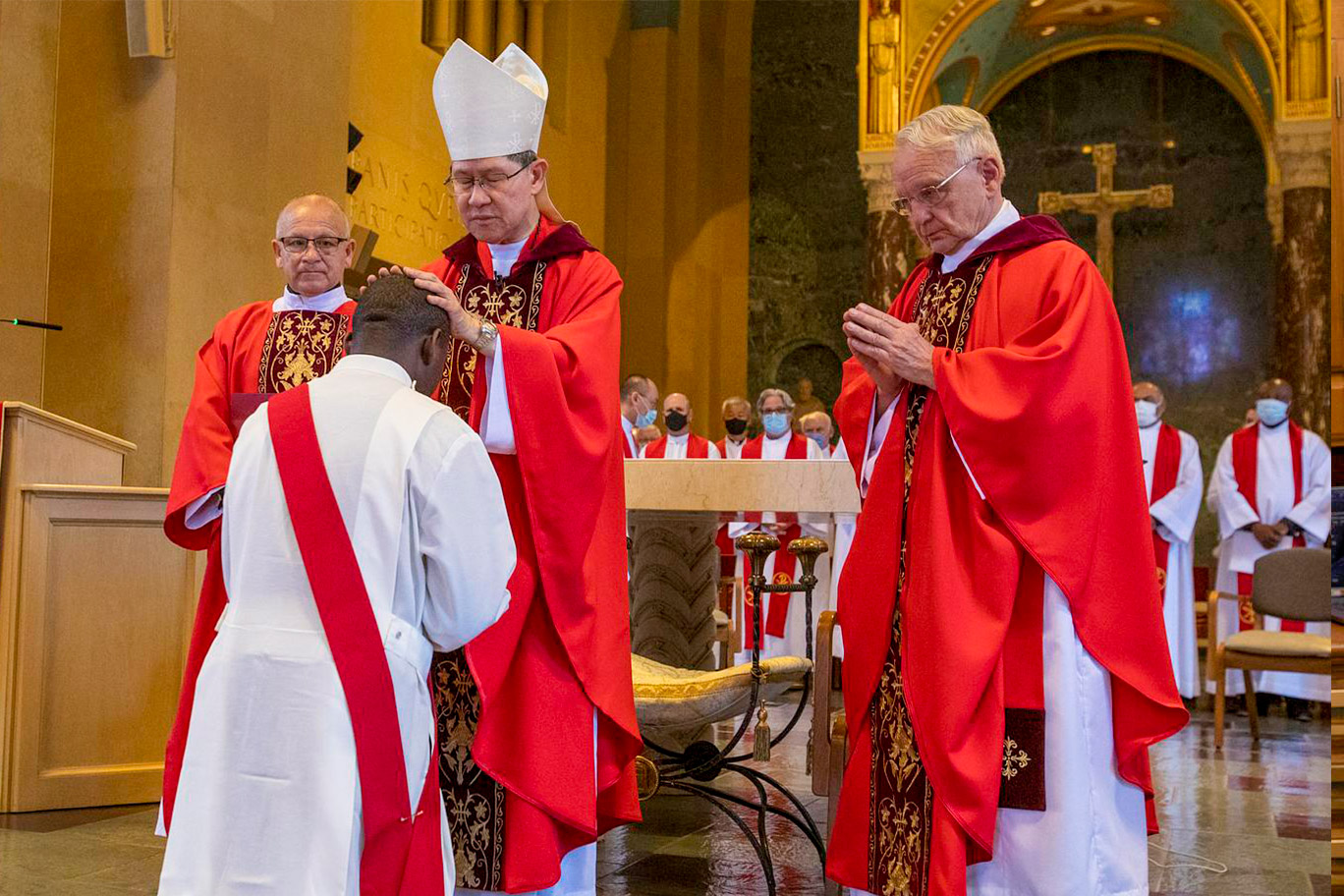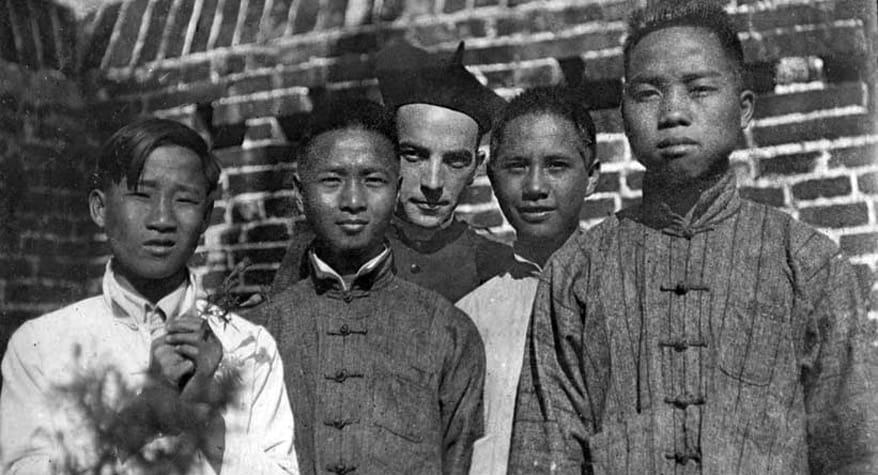
Cause for Bishop Ford’s Sainthood Moves Slowly
Someday, the late Bishop Francis X. Ford will be declared a saint, but no one thinks it will happen soon.
Have your prayer intentions remembered in our daily masses and communal prayers.

Someday, the late Bishop Francis X. Ford will be declared a saint, but no one thinks it will happen soon.
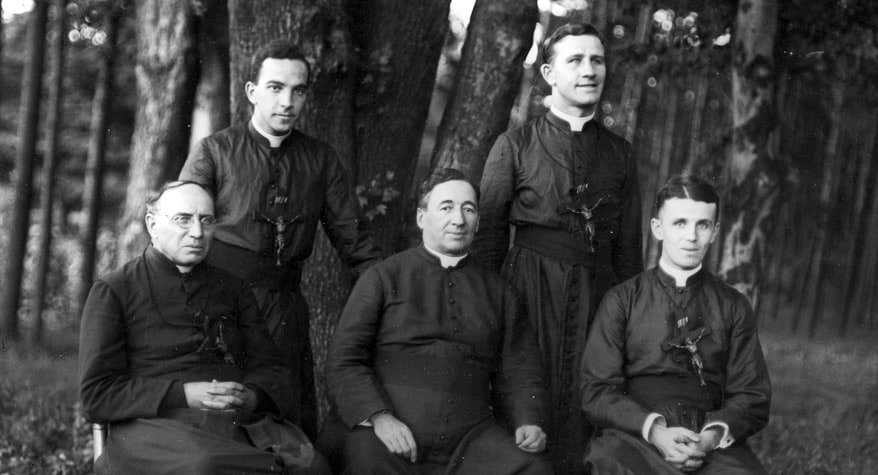
(article from Faith Magazine Jan/Feb 2011)
by Patricia Marshall
The young faces gazing out from the old black and white photos were calm but expectant. It was hard for me to imagine what they must have been feeling as they embarked on a difficult and potentially dangerous trip. They would probably never see their family and friends again.
These were not the faces of soldiers, but rather of early Maryknoll missionaries, waiting to board a ship that would take them to their new life of service in a foreign land. Their pictures hang in a display on the history of Maryknoll missions in the group’s headquarters in Ossining, N.Y.
This year the Maryknoll Fathers and Brothers, officially named The Catholic Foreign Mission Society of the United States, are celebrating their 100th anniversary. Among those celebrating are Diocese of Erie natives Father Paul Masson from Rouseville, Father Ed Shellito from Erie and Father Tom Egan from Oil City.
Much has changed about mission life over the past century. Travel to places such as Asia or South America took weeks in the early 20th century. Letters written home could take months to arrive, if they made it at all. Today’s flights enable travelers to reach the most distant destinations quickly, and to make visits home. The Internet can provide daily communication with friends and loved ones.
Early missioners were mostly priests and religious. Today there is a growing trend of lay involvement. Individuals or even families serve in missions through lay organizations such as the Maryknoll Mission Association of the Faithful. Retirees are joining the ranks of missionaries. Volunteers can choose short-term or long-term service.
Of course the basics of mission remain the same. Even though today’s missioners have options that would have seemed like unimaginable luxuries to early missionaries, mission life still requires much dedication, hard work and courage. Mission assignments in areas of political unrest or high criminal activity can be extremely dangerous. The rewards of being the bearer of the “Good News” cannot be measured in monetary terms, but still bring a joy that continues to call the faithful to a life of service.
Maryknoll has served people not only abroad, but also here in the United States by educating us about the lives of our brothers and sisters in Christ throughout the world. My own earliest memories of learning about missionaries include the Maryknoll magazines our catechism teachers gave us. These publications still teach students and adults about mission today.
Congratulations to the Maryknoll Fathers and Brothers on 100 years of amazing service. Along with that go my own personal thanks for introducing me to the work that has become so central in my life.
Patricia Marshall directs the Office of Diocesan and International Missions for the Diocese of Erie
Article from page 23 of Faith Magazine – Jan/Feb 2011 www.FAITHerie.com
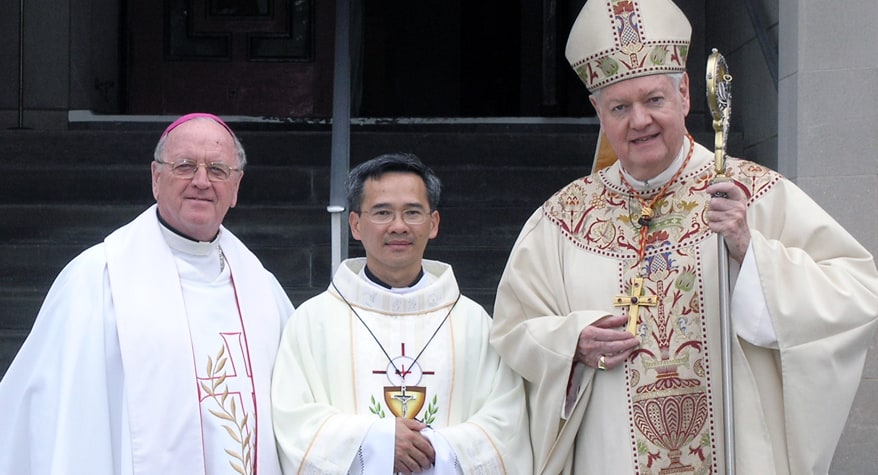
Edward Cardinal Egan Presides at Ordination Mass at Maryknoll
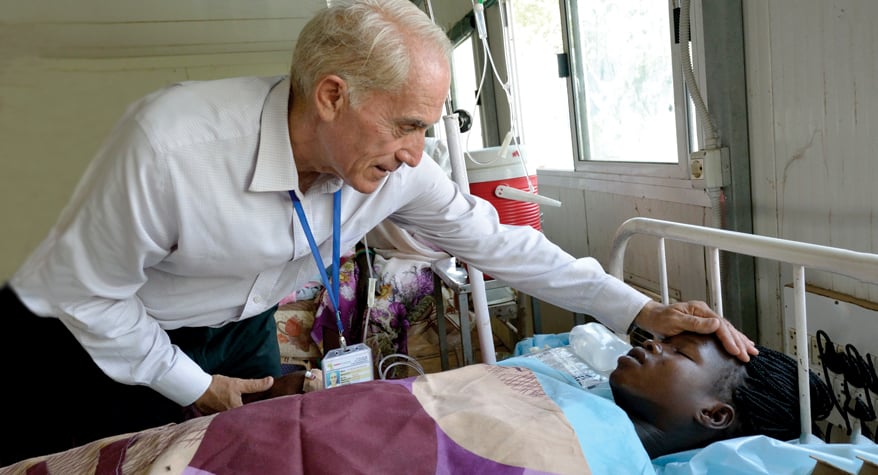
MALAKAL, South Sudan (CNS) — Behind the blue-helmeted U.N. soldiers ringing the periphery, their tanks and heavy weapons pointed outward, Maryknoll Father Mike Bassano’s parish is a tightly packed maze of tents and tarpaulins filled with people hiding from war.
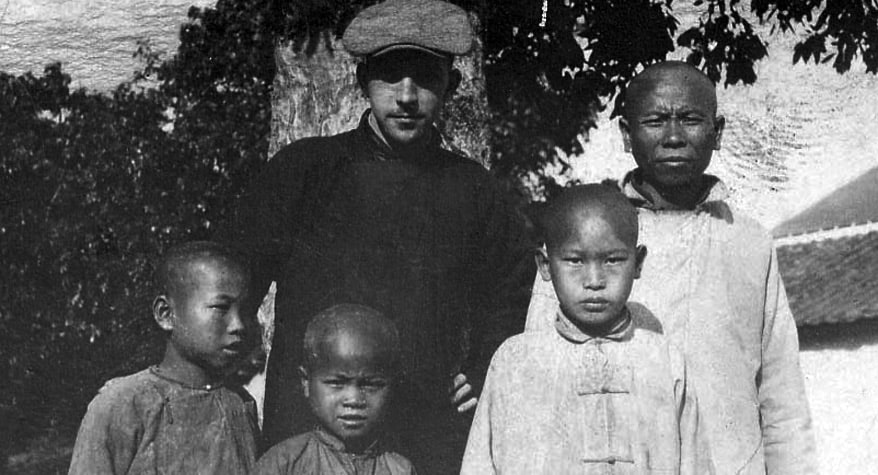
The recently published book, The American Catholic Almanac, is a daily reader about Catholic Americans who helped shape the history of the United States. Within its pages are brief stories about Buffalo Bill Cody, John F. Kennedy, Vince Lombardi and many others. Maryknoll, too, is included, represented by Bishop Francis X. Ford.
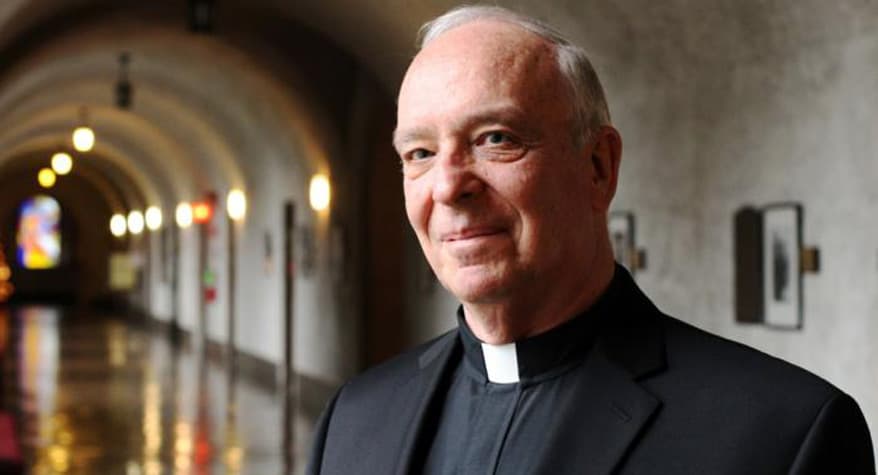
For Father Raymond J. Finch, the new superior general of Maryknoll, “nothing is more rewarding than to go out and help people deepen their faith.”
“If you don’t share the faith, it stops growing. The more you give of it, the more there is. The less you give, it shrinks,” he added.
Maryknoll, the 103-year-old Catholic Foreign Mission Society of America, works in 26 countries around the world. Father Finch began a six-year leadership term in November. He spoke to Catholic News Service Dec. 8 at Maryknoll headquarters.
For Catholics, mission today is more of an everyday experience and less of an exotic concept than it was in the past, Father Finch said. “The world is much smaller and people come and go. You won’t find many young people who haven’t left the country.”
There are also more people from the United States working in mission than ever before, Father Finch said. “Mission is so much bigger than Maryknoll. We have a role and a contribution, but the whole church is in mission.”
Pope Francis talks about people becoming missionary disciples and that’s what Maryknoll is trying to promote, Father Finch said. “He said we have to go beyond our needs to share with one another, deepen our own faith and be transformed by God’s grace.”
“He speaks of the joy of mission and becoming who we are called to be,” Father Finch said.
In Maryknoll’s early years, the United States was considered a mission-sending country and the overseas locations were mission-receivers. But Father Finch said the Second Vatican Council helped Catholics appreciate “a growing awareness of the mutuality of mission.”
Missioner priests, brothers and sisters have been joined by significant numbers of laypeople and parish groups, he said. Laity serve Maryknoll through both a long-established lay mission program, Maryknoll Lay Missioners, and a newer initiative that welcomes volunteers for stretches of six weeks to 12 months.
A group of five people joined the ranks of Maryknoll Lay Missioners Dec. 1 after a 10-week orientation period. They will leave in January 2015 to serve in El Salvador, Kenya, Tanzania and Cambodia for at least three and a half years.
Maryknoll Lay Missioners came out of the umbrella and tradition of the Maryknoll Fathers and Brothers, but it functions independently.
“We help people motivated by the Gospel find situations, adapt to them and use their talents in culturally appropriate ways,” Father Finch said. Lay involvement in Maryknoll has always been strong, but has grown as more laypeople take responsibility for parishes and their faith lives, he said.
Individual lay volunteers in short-term assignments work alongside Maryknoll mentors in Asia, Africa and Latin America. Groups from parishes and universities experience Maryknoll through immersion trips. Father Finch said the experience is more valuable to the participants than the Maryknoll hosts, but is a blessing for the church in the United States. “There’s something privileged about being able to live the faith and share it with another culture on a deep level,” he said.
“Mission isn’t just for professional missioners. It’s for everybody. You were called by God in Baptism to be a messenger of God’s presence in the world,” Father Michael J. Snyder told CNS. He is the coordinator of Maryknoll’s program for short-term volunteers, which was formalized in 2004.
Volunteers do not accomplish physical tasks, such as digging latrines, but develop a camaraderie with the people they encounter overseas and come to appreciate the richness of the world, he said. “It helps us realize we’re all brothers and sisters in God’s family.”
Father Finch, 66, entered Maryknoll in 1966 and was ordained a priest in 1976. He served in Bolivia and Peru for 38 years and was superior general from 1996 to 2002. Although he was elected by a majority of his Maryknoll confreres, the Brooklyn native attributes his return to the leadership post to God’s sense of humor.
He was very happy in Latin America but said, “One of the things very important in mission is to listen to what I am being called to do and try not to say no.”
Father Finch said he will try to do better in his second term. One of the biggest challenges is “we are fewer and we are older. At the same time, I see people still giving and doing what they can to bring the Gospel and God’s love,” he said. There are 350 Maryknoll priests and brothers, a decline from 400 in 2011.
“We do what we can,” he said, quoting Maryknoll co-founder Father James A. Walsh. “Our job still is to go where we are needed but not wanted and stay until we are wanted but not needed.”
“Numbers are not the point. Maryknoll is about giving things over to the local church, forming the local clergy and the local people. Today, we call all people to mission,” Father Finch said.
There are 12 men in formation now to become Maryknoll priests. Three are former Maryknoll volunteers. “We are constantly inviting and reaching out,” Father Finch said. “I would love to see Maryknoll be a reflection of the Catholic Church in the US, with more Spanish-speaking missioners.”
He said in the past three years, Maryknoll has enhanced its program for mission education in U.S. parishes and schools and reached out to deacons. “We don’t think we can do it alone. Mission is from everywhere to everywhere.”
Maryknoll does not recruit from the countries where it serves, but welcomes local clergy called to work in mission in other countries, Father Finch said. There are Korean priests serving with Maryknoll in Cambodia and at least one from Hong Kong working in Africa. “The bottom line is mission,” he said.
“We’re trying to be more faithful each year to what we’re being called to do, here and around the world. There’s always room for improvement,” he said with a smile.
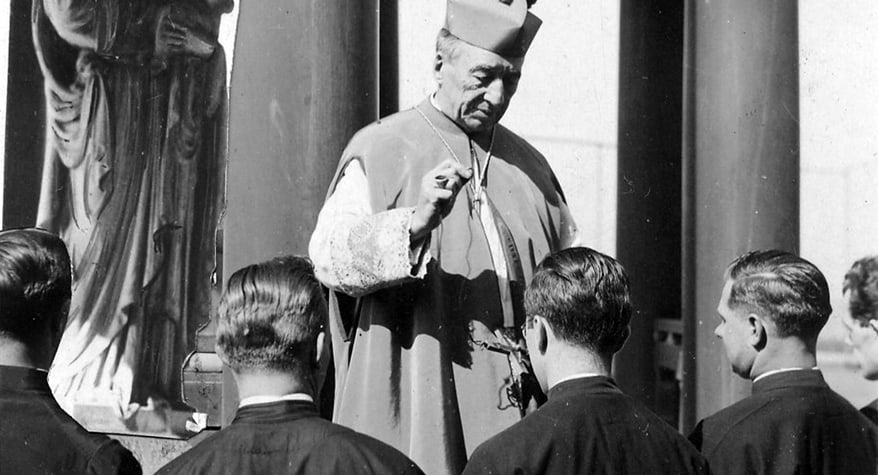
Fathers, Brothers, Sisters and Lay People All Cultivate a Family Atmosphere at Maryknoll.
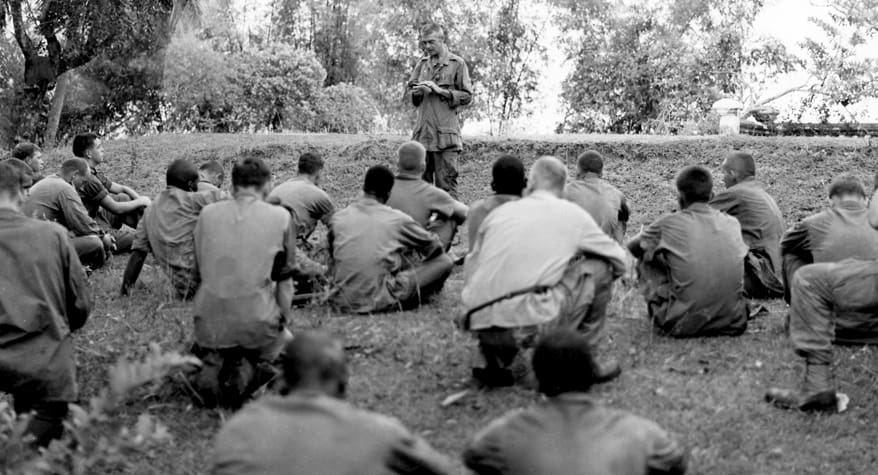
SPECIAL TO THE ADVANCE
(article originally appeared in the Staten Island Advance – www.silive.com)
STATEN ISLAND. N.Y. – There are some people who possess an extraordinary singleness of purpose uninhibited by adversity or misfortune of any kind. They have a faith that is so dominating as to provide the will to resist them being deterred from what they see as their mission in life.
Such a person was Vincent Robert Capodanno.
On Sept. 4, 1967, nearly 45 years ago, Father Capodanno was killed on a battlefield in Vietnam living out his purpose in this life — protecting, comforting and indeed, living as one of them, the United States Marines, in battle and under fire.
He risked his life a hundred times over in fulfilling his mission for God on this Earth and did so with courage and dignity and passion.
Vincent Capodanno was born on Feb. 13, 1929, in Mariners Harbor, to an Italian-American family, both his parents having emigrated from the town of Gaeta in Italy. It was here on Staten Island that the remarkable story of one exceptional human being began.
An early calling was his blessing and though he never expressed it to his family, it became evident to them particularly as they watched Vince’s development as a priest and a missionary.
Vince graduated from PS 44 in January 1943. Always fastidious, his classmates voted him best looking and best dresser. He attended Curtis High School, where he served as a class officer and worked after school at a local drug store. A devout Catholic, he attended daily mass while working as a clerk at the Pearl Insurance Company on Maiden Lane in Manhattan, following graduation in 1947.
THE CALLING
He also attended night classes at Fordham University. It was during a retreat young Capodanno attended that he confided to his friend William Richter his great desire to become a priest.
He was further drawn to foreign mission work and applied to the seminary of the Maryknoll Missions in Ossining, N.Y. He would spend the next nine years in study and preparation for his calling.
Father Capodanno was ordained on June 14, 1958, with his whole family in attendance. He received ordination from Cardinal Francis Spellman, who would also be his superior in the Chaplain Corps and would later say the funeral Mass for the chaplain.
The first assignment for the new priest was in Taiwan, where he served for six years. Sadly, his mother, Rachel, was in failing health at the time of his departure for the East, making the separation all the more painful for both of them. On Feb. 27, 1961, she passed away and Father Vincent was not able to return home for her funeral.
He was further troubled by the knowledge that his mother had worried about his serving so far away and in a foreign country.
Reassigned to Hong Kong in 1965, it was at this time that Father Vincent made an application to join the Chaplain Corps. His restlessness and the desire to do more prompted his decision. Furthermore, he chose the Marines. It was his desire to “go where he was needed.”
After serving 11 months in Vietnam, he insisted upon extending his tour by six more months. His work of living with and sharing the burdens of the combat Marines was not yet completed. His request was ultimately granted in the summer of 1967.
The decisions — to become a priest, to enter the missions, to serve as a combat chaplain — were great ones, yet seemed to flow from Father Vincent as the natural course of his life and purpose took shape within him. He, indeed, became a Marine. He lived with them, worked with them, comforted them under dire stress and in the end, died with them.
THE LAST FIGHT
On Sunday, Sept. 3, 1967, Father Vincent celebrated his last Mass in the village of An Hoa, south of Da Nang. A corporal who was an altar server that morning remembered the sky as a beautiful blue, and the sun bright.
The next morning, Operation Swift began. A standard “search-and-destroy” mission turned into a sky lit up with enemy mortar fire. Father Vincent arrived on the scene with companies K and M.
As the fighting intensified through the morning hours, Father Vincent was seen running from one fallen Marine to another, comforting and attending the wounded, administering the last rites of the church to the dying.
He felt the pain and suffering of “his Marines,” the men he called his parishioners. With no regard for his own welfare, he continued to perform what he considered his duty.
Out-numbered as they were, the 5th Marines suffered many casualties. Father Vincent was hit during one of his forays — shrapnel wounds to his arms, hand and leg — but refused medical attention. He instructed the corpsman to attend to the other wounded first.
As the battle persisted into the early evening, a enemy soldier with a machine gun had two Marines pinned down and Father Vincent went to their aid.
One of them, Cpl. Tancke, said: “He actually jumped in front of the machine gun.” Two bursts of fire hit the chaplain. He received 27 bullet wounds as he and corpsman Leal were killed together. One of the Marines who retrieved the chaplain’s body reported that he lay with his right hand over his left breast pocket and “had a smile on his face.”
Father Capodanno’s life is revealed in honor and intensity by Father Daniel L. Mode in his biography, “The Grunt Padre.”
‘SERVANT OF GOD’
Memorials to The Grunt Padre abound. At least seven chapels have been dedicated to his memory. On Dec. 29, 1971, the Navy named the Escort Ship DE-1093 the USS Capodanno; among the art work inspired by Father Capodanno is the oil painting by Staten Island artist Gregory Perillo as part of his 40 works dedicated to the warriors of Vietnam.
Of course, Seaside Boulevard was renamed Father Capodanno Boulevard. The list is far to long for this space.
Although he did not pursue such honors, Father Capodanno was awarded the Vietnamese Cross of Gallantry with Silver Star and the Navy Bronze Cross for meritorious service during six combat operations.
He received the Purple Heart posthumously and on Jan. 7, 1969, at the Washington Navy Yard Sail Loft, James Capodanno, on behalf of the Capodanno family, accepted the Congressional Medal of Honor for his brother.
Most significant are the steps being taken by the Vatican in Rome to bestow sainthood in the Roman Catholic Church upon this man.
There are three stages to the process and Father Capodanno has achieved stage one — named a “Servant of God.” Earlier this year, a Vatican representative visited the Island to interview those who knew him as part of the investigation for stage two.
Whether or not the canonization is accomplished, Father Capodanno is surely no less than a saint to all who knew him. It was said by those who served with him in battle that he was a man “imbued with the spirit of Christ …”
Said Navy Chaplain Joseph F. Cloonan, serving in Vietnam, in a statement published under the title “A Bell For Capodanno”:
“But every once in a while, like a flash of heat lightning, the self-giving of someone like Father Capodanno illuminates the mystery of nobility in an ignoble world.”
Another colleague, Father Thomas J. Woolten, wrote of the Marines and Father Vincent after his death: “Those Grunts saw Christ when they saw Vince.”
He could not have been far off the mark.
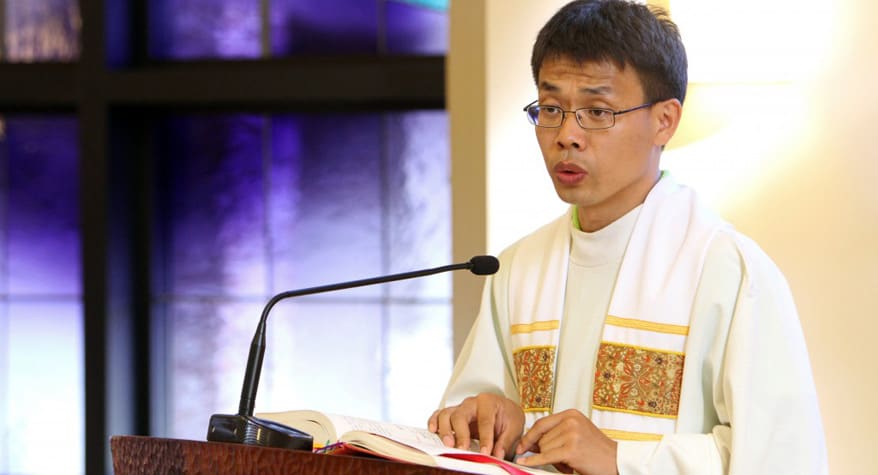
RONKONKOMA, N.Y. (CNS) — As Pope Francis’ plane was cruising through Chinese airspace in mid-August en route to his first visit to the Far East, 20 Chinese priests and nuns were assembling halfway around the globe at a retreat house in the United States, preparing to begin a week of quiet prayer and reflection.
The gathering at the Cenacle Retreat Center in Long Island, New York, was affiliated with the Chinese Seminary Teachers and Formators Project, an initiative launched by Maryknoll Fathers and Brothers in 1991 to help train priests and women religious for various leadership roles in the church in China.
“It’s Maryknoll’s way of cooperating with the Chinese bishops and religious superiors to help the church in China grow,” explained Maryknoll Father Larry Lewis, who has been involved with the project for 21 years.
The Chinese participants in the program “are under a lot of pressure in this country, studying for a master’s or doctoral degree in another language,” said Fr. Lewis, former project coordinator. “This gives them a chance to leave that pressure behind.”
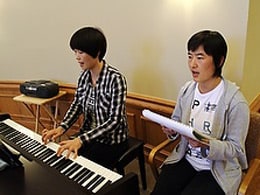 Most of the summer retreats associated with the project have been preached retreats, allowing for interaction between retreatants and presenters. This year’s, however, was a directed silent retreat, where each retreatant met one hour a day with a spiritual director who recommended Scripture readings and provided individual counsel. The rest of the day, between meals, was spent in solitary prayer and reflection, with the group gathering for Mass before dinner.
Most of the summer retreats associated with the project have been preached retreats, allowing for interaction between retreatants and presenters. This year’s, however, was a directed silent retreat, where each retreatant met one hour a day with a spiritual director who recommended Scripture readings and provided individual counsel. The rest of the day, between meals, was spent in solitary prayer and reflection, with the group gathering for Mass before dinner.
“Part of the whole experience here, and we know this from being missionaries and going abroad, you have an opportunity in another culture to see yourself differently, see your faith differently, see the church differently,” Fr. Lewis said. “Being in an unfamiliar situation, you don’t have the usual escapes at hand. It’s very important the spiritual immersion that we offer through the retreat help them look at that and learn from that. It’s a wonderful experience.”
 Maryknoll Sister Janet Carroll, who has been involved with the project from the beginning, said the retreat is a welcome respite for the priests and nuns. The self-imposed and cultural pressure to excel in a foreign environment can be overwhelming, she said.
Maryknoll Sister Janet Carroll, who has been involved with the project from the beginning, said the retreat is a welcome respite for the priests and nuns. The self-imposed and cultural pressure to excel in a foreign environment can be overwhelming, she said.
“They have to study five times as much as a regular student every waking hour,” Sr. Janet said.
Chinese participants are handpicked by their bishops and religious superiors to continue their higher education in the U.S. under the auspices of a Maryknoll-appointed project coordinator, who directs them to schools that offer advanced degrees in coursework relevant to the needs of their dioceses and religious communities.
Areas of study include:
• canon law
• liturgy
• spiritual direction
• church history
• pastoral counseling
• ethics
• family therapy
• social work
Most participants enroll in master’s programs, while some work toward doctoral degrees. Before being accepted into the program, candidates must possess a bachelor’s or equivalent certification.
The biggest obstacle participants face when arriving in the U.S. is the language barrier. In order to succeed in the classroom, they must be proficient in English. So following their orientation at Maryknoll headquarters in New York, participants immerse themselves in English as a Second Language classes for a few months before they transition to their chosen college or university.
Project participants are placed at Catholic schools throughout the country. Those institutions have included Boston College; Catholic Theological Union, Chicago; The Catholic University of America, Washington; Fordham University, Bronx, New York; Jesuit School of Theology of Santa Clara, California; Loyola University Chicago; St. John’s University, Collegeville, Minnesota; St. Mary’s University of Minnesota, Winona; and St. Vincent College, Latrobe, Pennsylvania.
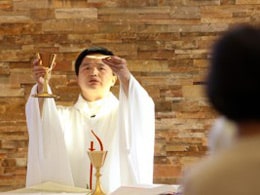 On average, participants study in the U.S. for four years before returning to China, where they serve the church in various capacities, including as:
On average, participants study in the U.S. for four years before returning to China, where they serve the church in various capacities, including as:
• diocesan administrators
• seminary rectors
• religious superiors
• academic deans
• spiritual directors
• retreat center directors
• teachers
• social service coordinators
Five graduates were ultimately ordained bishops.
Graduates of the program also minister in the public square, serving people of all faiths or no faith, spreading the Gospel message through their various skill sets.
“One of our priest-graduates started the first social center in Xi’an (more than 10 years ago),” Fr. Lewis said. “And it’s still going strong.”
Project participants also convene each year between academic sessions at Maryknoll in late December for a one-week seminar that focuses on such topics as interreligious dialogue; domestic violence; AIDS education; hospice care; and sex, alcohol, drug and gambling addiction.
The summer retreat and winter seminar provide an opportunity for the priests and nuns to connect with one another and to develop friendships that many maintain when they return home.
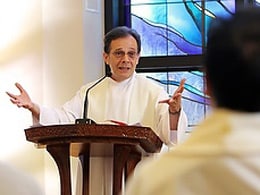 Fr. Lewis said the fraternal spirit generated in the U.S. bears fruit for the church in China.
Fr. Lewis said the fraternal spirit generated in the U.S. bears fruit for the church in China.
“They invite each other to give seminars and lead retreats and teach courses,” Fr. Lewis said. “Last year they had an official reunion of alumni in China.”
Because of the intensity and duration of the program, participants are required to go home for a month or two midway through their stay to reconnect with their dioceses, religious communities and families.
“China is changing so rapidly, so it’s important to keep them in contact with their dioceses and religious congregations,” said Fr. Lewis. “That’s been a huge factor in helping them remember why they’re here. They’re here to go back.”
Maryknoll’s annual budget for the project is $700,000, said Fr. Lewis. The society pays for participants’ travel expenditures; medical expenses not covered by the sponsoring institution or religious community; tuition costs not covered by scholarships; and costs associated with the annual retreat and seminar. The project also pays for the project coordinator’s assistant, who handles the daily administrative duties.
As with many religious communities, Maryknoll has fewer personnel as a result of the decline in vocations to priestly and consecrated life. The project, however, has helped the society continue its evangelization efforts in a country its missioners first visited in 1918.
“I have tremendous respect for this project,” said Fr. Lewis. “I think it’s a very sane way of doing mission now.”
Sr. Janet concurred: “We are able to do what Maryknoll was founded to do, which is to support the local church and to build up the local church. In lieu of having our own men and women live and work in China, we’re able to channel the money directly into the church in China.”
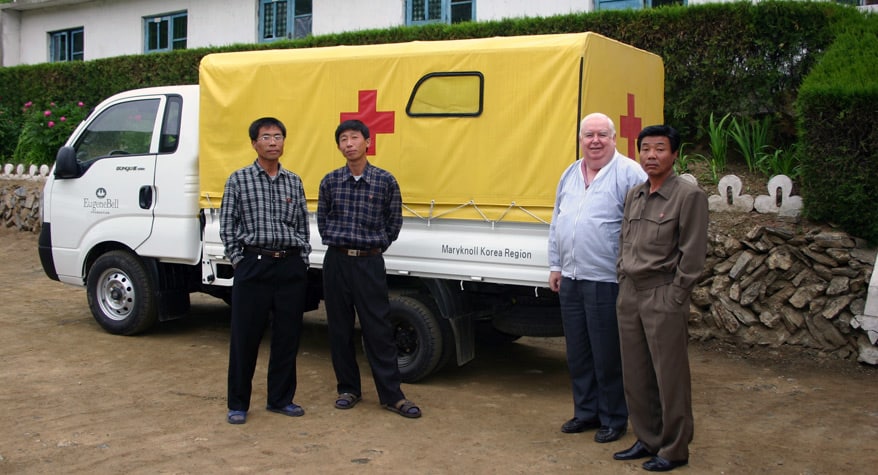
Since the end of the Korean War in 1953, no Catholic priest has resided in the North of this divided peninsula, where autonomous religious activity is effectively forbidden. And no enemy of the communist regime there is more detested or fiercely denounced than the United States.
ABOUT MARYKNOLL
We are a Catholic Society of priests and brothers based in the United States. We are dedicated to missionary work overseas in over 20 countries. Additionally, we animate Catholics in the United States to follow their own baptismal call to share God’s compassion and love with the poor, the sick, and all those in need.
OUR GENERAL COUNCIL

(Fr. Lance P. Nadeau, Fr. James M. Lynch, Fr. Timothy O. Kilkelly, Fr. Juan Montes Zúñiga)
The Maryknoll Fathers and Brothers is overseen by our General Council, led by Superior General Rev. Lance P. Nadeau, M.M.
OUR FOUNDERS
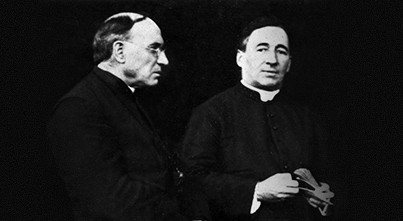
(Our Co-Founders Father Price and Father Walsh)
MISSION MINISTRIES
PLACES WE SERVE
EVANGELIZATION, PARISHES, AND PROJECTS
STORIES OF MISSION
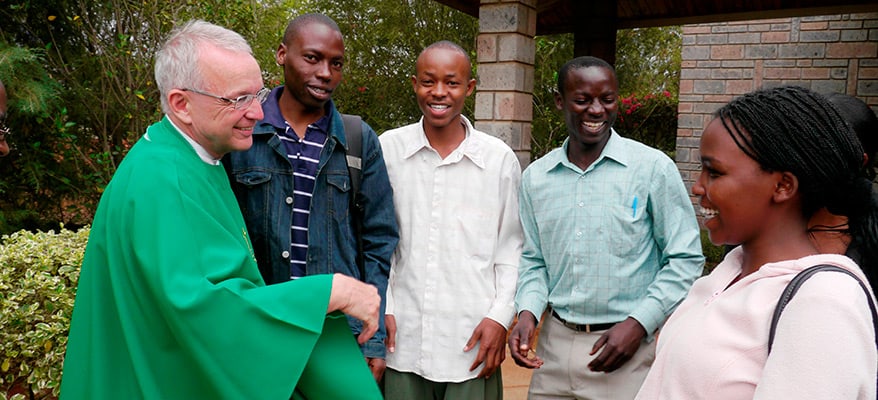
The Maryknoll Fathers and Brothers Africa Region will provide tuition assistance to African clergy, male and female religious at institutes of higher education or specialized training. Read More
NAVIGATE MARYKNOLL VOCATIONS
The calling of a lifetime
